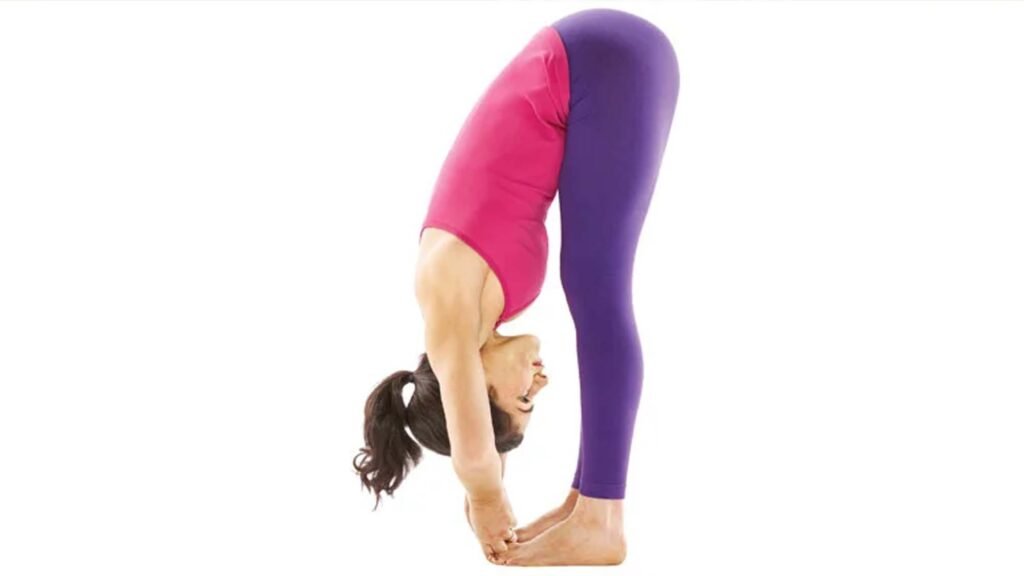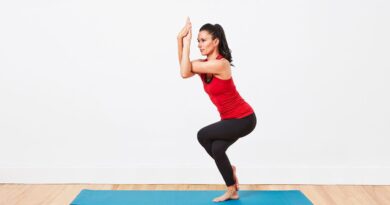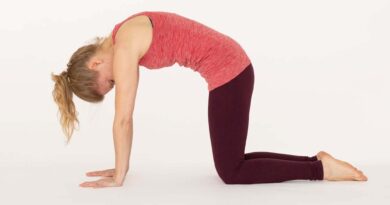Padangusthasana Yoga: Introduction, Background, Benefits, Steps, Precautions, and Conclusion
Table of Contents
Introduction of Padangusthasana Yoga
Padangusthasana, also known as the Big Toe Pose, is a popular yoga asana that offers numerous physical and mental benefits. This standing forward bend posture provides a deep stretch to the hamstrings and calves while promoting a sense of calmness and focus. In this article, we will delve into the background, benefits, steps, precautions, and conclusion of Padangusthasana.
Background of Padangusthasana Yoga
Padangusthasana has its roots in ancient yoga practices. The word “padangusthasana” is derived from the Sanskrit words “pada” meaning “foot” and “angustha” meaning “big toe.” This asana holds significance in various yoga traditions, including Hatha yoga and Ashtanga yoga. It is often incorporated into yoga sequences as a preparatory pose or a transitional posture.
Padangusthasana Yoga Benefits
Padangusthasana offers a multitude of benefits for both the body and mind. Here are some key advantages of practicing this yoga pose:
Stretches the Lower Body
Padangusthasana primarily targets the hamstrings, calves, and lower back, providing a deep stretch to these areas. Regular practice can improve flexibility and relieve muscle tension.
Improves Blood Circulation
The inverted position of the body in this pose enhances blood flow to the brain and upper body, stimulating the circulatory system and promoting overall cardiovascular health.
Calms the Mind
The forward fold in Padangusthasana encourages introspection and deep breathing, leading to a state of relaxation and mental tranquility. It can help reduce stress, anxiety, and insomnia.
Enhances Digestion
The compression of the abdominal area during the pose stimulates the digestive organs, aiding in digestion and alleviating common digestive issues such as bloating and constipation.
Strengthens the Legs
Holding the posture engages the leg muscles, including the quadriceps and calves, promoting strength and stability in the lower body.
Improves Posture
Regular practice of Padangusthasana helps align the spine, correct posture imbalances, and relieve tension in the back, thereby promoting a healthier posture.
Boosts Concentration
The focused gaze and mindful breathing involved in Padangusthasana enhance concentration and mental clarity. It can be beneficial for individuals seeking to improve their focus and productivity.

Steps to Perform Padangusthasana Yoga
Follow these step-by-step instructions to practice Padangusthasana:
- Start by standing in Tadasana (Mountain Pose), with your feet hip-width apart and your arms resting at your sides.
- Inhale deeply and engage your core muscles.
- Exhale and slowly bend forward from the hips, keeping your spine straight.
- Reach down with your hands and hold the big toes of each foot with your respective hands. If you are unable to reach your toes, you can use a yoga strap looped around the balls of your feet.
- Inhale and lift your torso slightly, lengthening your spine.
- Exhale and fold forward, aiming to bring your chest toward your thighs.
- Keep your knees straight or slightly bent, depending on your flexibility.
- Hold the pose for 30 seconds to 1 minute, breathing deeply and maintaining a relaxed state.
- To release the pose, inhale and slowly rise back up to the standing position.
Precautions of Padangusthasana Yoga
While Padangusthasana is generally safe for most individuals, it is essential to take certain precautions to avoid strain or injury:
- If you have a recent or chronic injury to the back, knees, or hips, consult with a qualified yoga instructor or healthcare professional before attempting this pose.
- Avoid practicing Padangusthasana if you have high blood pressure or glaucoma.
- Individuals with a herniated disc or sciatica should modify the pose under expert guidance or avoid it altogether.
- Pregnant women should approach Padangusthasana with caution and consult their healthcare provider before attempting it.
- Always listen to your body and respect its limits. Do not push yourself beyond your comfort zone or force the pose.
FAQ of Padangusthasana Yoga
1. Can beginners practice Padangusthasana?
Absolutely! Padangusthasana is suitable for beginners, but it is crucial to start with modifications and gradually work towards the full expression of the pose. Seek guidance from a qualified yoga instructor to ensure proper alignment and prevent injuries.
2. Can Padangusthasana be practiced by individuals with knee pain?
If you have knee pain, it is advisable to exercise caution when practicing Padangusthasana. Bend your knees slightly or use props like blocks or a folded blanket to support your hands, reducing strain on the knees. Consult with a healthcare professional or yoga instructor for personalized guidance.
3. How often should I practice Padangusthasana?
The frequency of practicing Padangusthasana depends on your fitness level and personal preferences. Starting with a few times per week and gradually increasing the frequency is a good approach. Listen to your body and give it ample rest between sessions.
4. Can Padangusthasana help with lower back pain?
Yes, Padangusthasana can provide relief from lower back pain by stretching the hamstrings and releasing tension in the back muscles. However, if you have a specific back condition or chronic pain, consult with a healthcare professional or experienced yoga instructor before practicing this pose.
5. What other asanas complement Padangusthasana?
Several asanas can complement Padangusthasana and create a well-rounded yoga practice. Some examples include Uttanasana (Standing Forward Bend), Adho Mukha Svanasana (Downward-Facing Dog), and Balasana (Child’s Pose). Experiment with different combinations to find what works best for your body and goals.
Conclusion
Padangusthasana, the Big Toe Pose, is a valuable addition to your yoga practice. With its numerous physical and mental benefits, this asana can help you achieve flexibility, calmness, and improved overall well-being. Remember to practice with mindfulness and respect for your body’s limitations. Enjoy the journey of self-discovery and growth that yoga offers.





